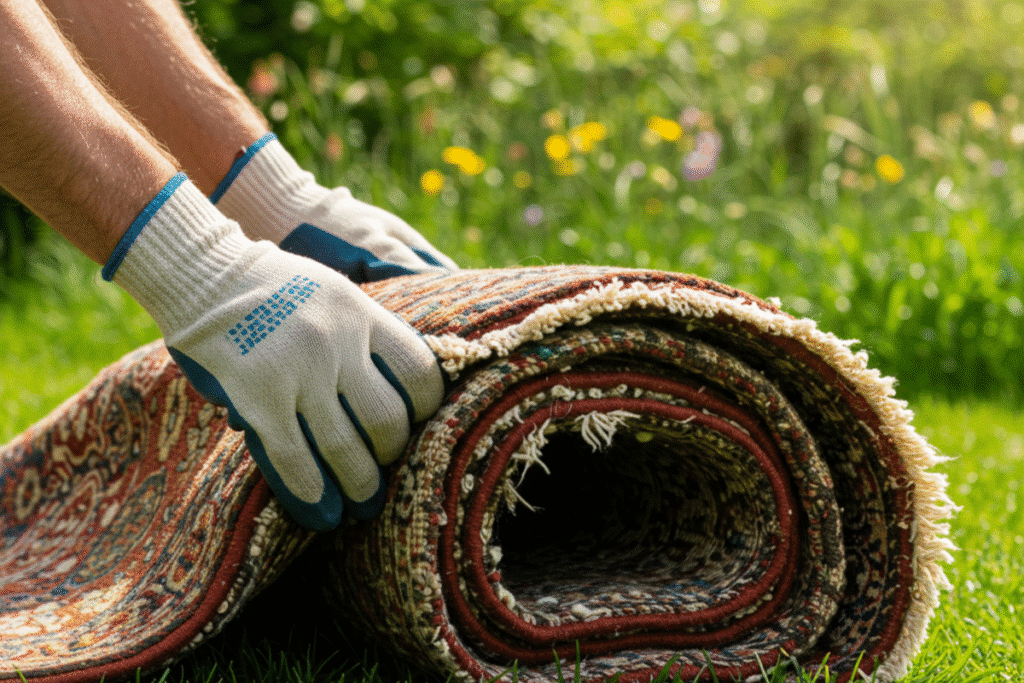Why Responsible Carpet Disposal Matters for Our Environment
When it comes time to replace an old, worn-out carpet, it’s crucial to think beyond simply getting rid of it. Carpets are more than just floor coverings—they’re made from multiple layers of synthetic fibers, latex, dyes, and sometimes even chemical treatments that help with stain resistance and durability. If not disposed of responsibly, these components can have serious consequences for the environment.
Traditional disposal methods, such as sending carpets to the landfill, can contribute to various forms of pollution. As carpets break down, they may release toxins and microplastics into the soil and water systems, potentially harming local ecosystems and wildlife. In addition, the decomposition process of synthetic materials in carpets can emit methane and other greenhouse gases, further contributing to climate change.
By choosing responsible carpet disposal methods, you help conserve valuable resources. Recycling or repurposing carpets means that fewer raw materials need to be extracted to make new products, and less waste ends up in our already overflowing landfills. This not only reduces environmental impact but also supports a circular economy, where materials are continuously reused and recycled. Ultimately, responsible carpet disposal protects both our communities and the natural world, making it an essential step for anyone looking to reduce their ecological footprint.
Understanding the Challenges of Carpet Removal
Removing a carpet isn’t as simple as rolling it up and hauling it away. Carpets are typically large, heavy, and cumbersome, especially once they’ve been installed for years and have accumulated dust, dirt, and moisture. Most carpets consist of several layers, including fibers, backing, and adhesives, all of which add to their weight and complicate the removal process.
For many homeowners and property managers, one of the first challenges is detaching the carpet from the floor. Carpets may be glued down or fastened with tack strips, requiring significant effort—and sometimes specialized tools—to remove safely and efficiently. This process can be physically demanding and time-consuming, particularly in larger spaces or commercial settings.
Once the carpet is free, its sheer size poses another challenge. Standard vehicles aren’t designed to transport large rolls of carpet, especially if you’re dealing with an entire home or office’s worth. Moving bulky carpets can be a struggle for individuals, often requiring teamwork or professional assistance to prevent injury and property damage.
On top of these logistical issues, carpets often can’t be simply left at the curb for regular waste pickup due to their size, weight, and material composition. All these factors make carpet removal a complex task that demands careful planning and, in many cases, support from specialized services.
Why Carpets Don’t Belong in Regular Trash Collection
It might seem convenient to leave an old carpet out with the weekly trash, but most municipal waste collection systems are not equipped to handle items of this scale. Carpets typically exceed the size and weight restrictions for residential waste, making them unsuitable for standard curbside pickup. Attempting to dispose of carpets in this way can result in fines, missed collections, or extra charges.
Furthermore, many local waste services have specific policies that prohibit carpet disposal, recognizing the challenges and risks involved. Carpets can tangle in collection machinery, damage equipment, and create safety hazards for workers. When carpets are improperly discarded—whether dumped at the curb, in alleyways, or in vacant lots—they can quickly become an eyesore and contribute to neighborhood blight.
Improperly disposed carpets also increase the risk of illegal dumping, which can have lasting effects on community health and the local environment. Dumped carpets can trap moisture, attract pests, and leach chemicals into the ground. All of these issues underline the importance of following local regulations and seeking out proper disposal methods for carpets, rather than relying on regular trash services.
Eco-Friendly and Compliant Alternatives for Carpet Disposal
If tossing your old carpet in the trash isn’t an option, what are the alternatives? The good news is there are several environmentally responsible and regulation-compliant ways to dispose of carpets. Start by checking your local municipality’s guidelines on carpet disposal. Some cities offer bulky item collection days or special pickup programs for large items like carpets—though these often require advance scheduling and may have specific preparation requirements.
Recycling is one of the best options for carpet disposal. Carpet recycling centers can separate the fibers, backing, and adhesives, allowing many of the materials to be repurposed for new products such as automotive parts, construction materials, or even new carpet padding. It’s important to contact these facilities ahead of time to understand their requirements and ensure they accept residential carpet waste.
If your carpet is still in good condition, consider donating it to local charities, shelters, or reuse organizations. Many non-profits can put gently used carpets to good use, helping families or facilities in need while keeping waste out of landfills.
Finally, professional removal services specialize in the safe and eco-friendly disposal of bulky items like carpets. These experts know how to properly remove, handle, and transport carpets according to environmental standards, saving you time and effort while ensuring responsible disposal.
Making Sustainable Choices: Recycling and Professional Solutions
Opting for sustainable carpet disposal is more than just a personal choice—it’s a commitment to protecting the environment and supporting your community. Recycling old carpets diverts significant waste from landfills and helps conserve valuable resources by giving new life to synthetic and natural fibers. This not only reduces environmental harm but also supports industries focused on creating recycled products.
Enlisting the help of professional removal services takes the guesswork out of the process. These specialists are equipped to handle every aspect of carpet disposal, from safe removal to transportation and delivery to recycling or disposal facilities. They ensure that all materials are managed according to local regulations and environmental standards, providing peace of mind and saving you the hassle of heavy lifting.
By choosing eco-friendly disposal solutions, you’re contributing to a cleaner, healthier community. Sustainable practices help reduce pollution, preserve green spaces, and protect local wildlife. Plus, your actions can inspire friends, family, and neighbors to adopt responsible disposal habits for carpets and other bulky items.
Whether you’re renovating, moving, or simply updating your space, make sustainable carpet disposal part of your plan. Together, we can make a positive impact—one carpet at a time.





